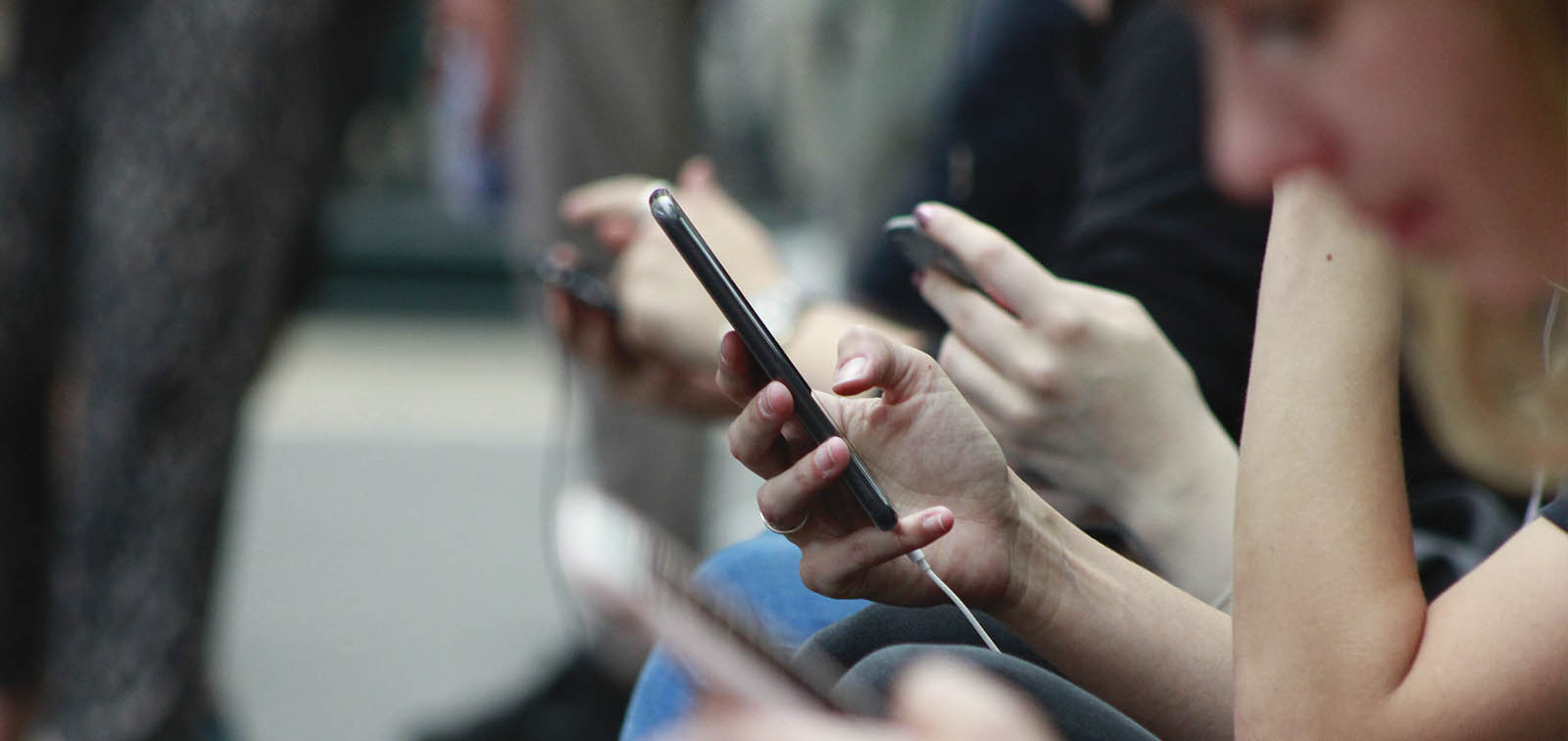Mobile and Cordless Telephone Use Not Associated With Increased Brain Tumour Risk in Young People
A new paper, based on data from 14 countries, reports the findings of the largest case-control study to date on the relationship between exposure to electromagnetic fields from wireless telephones (mobiles and portable) and brain tumours in young people
12.01.2022
The international MOBI-Kids study analysed the relationship between use of mobile and cordless telephones and brain tumour risk in young people from 14 different countries. The study, coordinated by the Barcelona Institute for Global Health (ISGlobal), a centre supported by the ”la Caixa” Foundation, concluded there was no evidence of a causal association between brain tumours and use of mobile and cordless telephones and, in particular, exposure to radiofrequency (RF) and extremely-low-frequency (ELF) electromagnetic fields from these phones.
The possibility that use of mobile communication devices could increase the risk of brain tumours has been a topic of growing public health concern in recent decades, particularly in light of the considerable increase in use of such devices by young people.
MOBI-Kids, an international case-control study set out to study this possible link using data from nearly 900 young people aged 10-24 years with brain tumours—most of the neuroepithelial type, mainly glioma—and 1,900 controls from 14 different countries matched to the cases on region, sex, age and date of diagnosis. To ensure sufficient participation, the controls were recruited from hospitals (people who had undergone surgery for appendicitis).
Participants completed a questionnaire with detailed information on their wireless device use history. Parents also completed a questionnaire on exposures that might have occurred prior to conception, during pregnancy and in the participant’s first year of life. To evaluate the adequacy of the data collected, various methodological sub-studies were conducted, including two validation studies. The first involved obtaining records from mobile phone operators to compare the number and duration of calls with those reported in the questionnaire. In the second validation study, participants were asked to install a mobile application on their phone to record their use of the device over four weeks. Exposure to RF and ELF electromagnetic fields from the phones was calculated using algorithms developed in MOBI-Kids.
The study, published in Environment International, provides no evidence of a causal association between wireless phone use and brain tumours in young people.
Although overall the data suggest that brain tumour risk may decrease with increased wireless phone use, “it is unlikely that these findings represent a preventive effect of wireless phone exposure,” noted ISGlobal researcher Gemma Castaño, lead author of the study. Instead, they appear to be explained mainly by “uncertainty in reported use when the questionnaire was completed by the parents rather than by the cases or controls themselves. Cancer symptoms prior to diagnosis could also affect participants’ mobile telephone use”, she added.
“This is the largest study of brain tumours in young people to date, but the number of subjects in each subgroup may have been too small to evaluate possible associations, for example, in specific windows of time, in specific age groups and in different anatomical locations of tumours,” added the researcher. “Hence, despite our best efforts, we cannot rule out that there could be a small increase in risk”.
One important strength of MOBI-Kids is the fact that brain tumour risk was analysed in relation to the estimated specific RF energy and ELF-induced current density at the location of the tumour. This is important because the RF and ELF doses at the tumour site depend not only on the duration and amount of telephone use, but also on the location of the tumour, the frequency band in which the telephones emit and the emission technology.
Results Consistent With Current Knowledge
“There is currently no conclusive scientific evidence that the levels of radiation emitted by mobile telephones can increase the risk of brain cancer, hence our results are consistent with the knowledge published to date,” concluded study coordinator Elisabeth Cardis, head of the Radiation Programme at ISGlobal.
However, recent animal and cell studies have reported increased oxidative stress associated with the radiation emitted by phones, as well as possible effects on genotoxicity and gene expression. Two large animal studies found an increased risk of heart schwannomas and glial cell tumours.
One possible mechanism by which RF or ELF might affect cancer risk is through tumour promotion or progression, thus possibly accelerating the appearance of a tumour which would otherwise have occurred later. “Further research is needed to understand the relationship between wireless telephone radiation and tumours, and studies are currently underway to understand these findings and the possible biological mechanisms of the radio frequencies emitted by mobile communication devices,” commented Cardis.
The study was funded by the European Commission (grant agreements 226873 and 603794) and national and regional funding sources in the participating countries. The following institutions participated in the study:
- Australia: Monash University
- Austria: Medical University of Vienna
- Canada: University of Ottawa, University of British Columbia (Vancouver), York University (Toronto)
- France: National Registry of Childhood Solid Tumors (Nancy), National Institute of Health and Medical Research (INSERM Paris)
- Germany: Ludwig Maximilians University of Munich
- Greece: National and Kapodistrian, University of Athens
- India: Tata Memorial Hospital, Mumbai
- Israel: Gertner Institute for Epidemiology and Health Policy Research
- Italy: Università degli Studi di Torino
- Japan: Tokyo Women’s Medical University
- Netherlands: University of Utrecht
- New Zealand: Massey University, Wellington
- South Korea: Dankook University College of Medicine
- Spain: Barcelona Institute for Global Health (ISGlobal) (coordination), Carlos III Health Institute, University of Huelva and University of Valencia
Exposure assessment support was provided by the Institut Polytechnique de Paris (France), the UK Health Security Agency, Tokyo Metropolitan University, and the Electronics and Telecommunications Research Institute (South Korea).
Reference
G. Castaño-Vinyals, S. Sadetzki, R. Vermeulen, F. Momoli, M. Kundi, F. Merletti, M. Maslanyj, C. Calderon, J. Wiart, A.-K. Lee, M. Taki, M. Sim, B. Armstrong, G. Benke, R. Schattner, H.-P. Hutter, D. Krewski, C. Mohipp, P. Ritvo, J. Spinelli, B. Lacour, T. Remen, K. Radon, T. Weinmann, E.Th. Petridou, M. Moschovi, A. Pourtsidis, K. Oikonomou, P. Kanavidis, E. Bouka, R. Dikshit, R. Nagrani, A. Chetrit, R. Bruchim, M. Maule, E. Migliore, G. Filippini, L. Miligi, S. Mattioli, N. Kojimahara, N. Yamaguchi, M. Ha, K. Choi, H. Kromhout, G. Goedhart, A. 't Mannetje, A. Eng, C.E. Langer, J. Alguacil, N. Aragonés, M. Morales-Suárez-Varela, F. Badia, A. Albert, G. Carretero, E. Cardis. Wireless phone use in childhood and adolescence and neuroepithelial brain tumours: Results from the international MOBI-Kids study, Environment International, December 2021. Volume 160, 2022, 107069, ISSN 0160-4120, doi.org/10.1016/j.envint.2021.107069.







